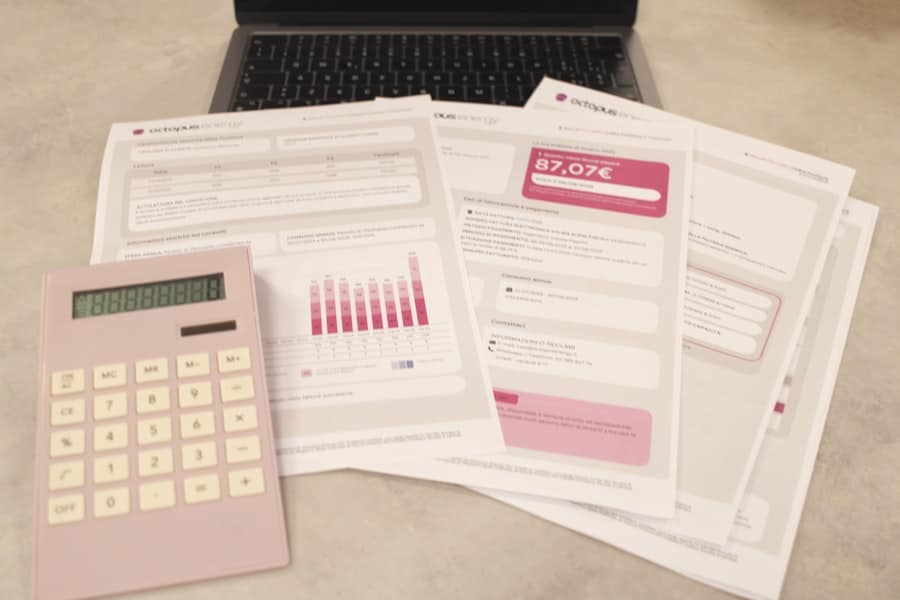The financial landscape has undergone a significant transformation in recent years, driven largely by advancements in technology. Among these innovations, artificial intelligence (AI) has emerged as a powerful tool for enhancing credit risk assessment processes. Traditional credit scoring methods, which often rely on historical data and simplistic algorithms, are increasingly being supplemented or replaced by AI-driven models that can analyze vast amounts of data with remarkable speed and accuracy.
This shift not only promises to improve the precision of credit evaluations but also aims to democratize access to credit for underserved populations. AI-powered credit risk assessment leverages machine learning algorithms, natural language processing, and big data analytics to evaluate an individual’s or a business’s creditworthiness. By incorporating a broader range of data points—such as social media activity, transaction history, and even alternative data sources—these systems can create a more nuanced picture of a borrower’s financial behavior.
This approach allows lenders to make more informed decisions, potentially reducing default rates and increasing the overall efficiency of the lending process. As financial institutions continue to explore the capabilities of AI, the implications for both borrowers and lenders are profound, reshaping the dynamics of credit markets.
Key Takeaways
- AI-powered credit risk assessment is revolutionizing the financial services industry by leveraging advanced technology to make more accurate and efficient lending decisions.
- The current state of AI in credit risk assessment shows promising results in improving risk prediction, reducing human bias, and increasing operational efficiency for financial institutions.
- Advantages of AI-powered credit risk assessment include faster decision-making, improved accuracy, and the ability to analyze large volumes of data, while limitations include potential algorithmic bias and lack of interpretability.
- Ethical and privacy considerations in AI-powered credit risk assessment are crucial, as the use of sensitive personal data and potential biases in algorithms raise concerns about fairness and transparency.
- Regulation and compliance play a critical role in ensuring the responsible and ethical use of AI in credit risk assessment, with the need for clear guidelines and standards to address potential risks and protect consumers.
The Current State of AI in Credit Risk Assessment
As of 2023, the integration of AI into credit risk assessment is gaining traction across various sectors of the financial industry. Major banks and fintech companies are increasingly adopting AI technologies to refine their credit evaluation processes. For instance, institutions like JPMorgan Chase and Goldman Sachs have invested heavily in AI research and development, employing sophisticated algorithms that analyze customer data in real-time.
These systems can identify patterns and trends that traditional models might overlook, enabling lenders to assess risk more accurately. Moreover, the rise of alternative lending platforms has further accelerated the adoption of AI in credit risk assessment. Companies such as Upstart and ZestFinance utilize machine learning algorithms to evaluate borrowers who may not have a traditional credit history.
By analyzing non-traditional data points—such as education, employment history, and even behavioral data—these platforms can extend credit to individuals who would otherwise be deemed uncreditworthy by conventional standards. This shift not only broadens access to credit but also challenges the traditional banking model, prompting established institutions to innovate or risk losing market share.
Advantages and Limitations of AI-Powered Credit Risk Assessment

The advantages of AI-powered credit risk assessment are manifold. One of the most significant benefits is the ability to process and analyze large datasets quickly and efficiently. Traditional credit scoring models often rely on a limited set of variables, which can lead to biased outcomes or missed opportunities for borrowers with unconventional profiles.
In contrast, AI systems can incorporate a diverse array of data sources, leading to more accurate assessments of creditworthiness. This capability not only enhances decision-making for lenders but also fosters financial inclusion by allowing more individuals access to credit. However, the implementation of AI in credit risk assessment is not without its limitations.
One major concern is the potential for algorithmic bias, where AI systems may inadvertently perpetuate existing inequalities in lending practices. If the training data used to develop these models contains biases—such as historical discrimination against certain demographic groups—the resulting algorithms may produce skewed outcomes that disadvantage those same groups. Additionally, the complexity of AI models can make it challenging for lenders to interpret their decisions, raising questions about transparency and accountability in the lending process.
Ethical and Privacy Considerations in AI-Powered Credit Risk Assessment
The ethical implications of using AI in credit risk assessment are significant and multifaceted. One primary concern revolves around privacy issues related to data collection and usage. As AI systems often require access to extensive personal information—ranging from financial records to social media activity—there is a heightened risk of infringing on individuals’ privacy rights.
Consumers may be unaware of how their data is being utilized or may not have given explicit consent for its use in credit evaluations. This lack of transparency can erode trust between borrowers and lenders, potentially leading to reputational damage for financial institutions. Moreover, ethical considerations extend beyond privacy concerns to encompass issues of fairness and equity.
The use of alternative data sources in credit assessments raises questions about whether these factors are genuinely predictive of creditworthiness or if they introduce new forms of discrimination. For example, relying on social media activity could disproportionately affect individuals from lower socioeconomic backgrounds who may not have the same online presence as their wealthier counterparts. As such, it is crucial for financial institutions to establish ethical guidelines and frameworks that prioritize fairness while leveraging AI technologies.
The Role of Regulation and Compliance in AI-Powered Credit Risk Assessment
As AI continues to reshape the landscape of credit risk assessment, regulatory bodies are grappling with how best to oversee these developments. The rapid pace of technological advancement often outstrips existing regulatory frameworks, creating a gap that could lead to potential abuses or unintended consequences. In response, regulators are beginning to explore new guidelines that address the unique challenges posed by AI in financial services.
For instance, the European Union has proposed regulations aimed at ensuring transparency and accountability in AI systems used for credit assessments. These regulations emphasize the need for explainability in algorithmic decision-making processes, requiring lenders to provide clear justifications for their credit evaluations. Similarly, in the United States, agencies such as the Consumer Financial Protection Bureau (CFPB) are examining how existing fair lending laws apply to AI-driven models.
As regulatory scrutiny increases, financial institutions must navigate a complex landscape while ensuring compliance with evolving standards.
The Future of AI-Powered Credit Risk Assessment in Financial Services

Looking ahead, the future of AI-powered credit risk assessment appears promising yet complex. As technology continues to evolve, we can expect further advancements in machine learning algorithms that enhance predictive accuracy and reduce bias in lending decisions. Innovations such as explainable AI (XAI) are gaining traction, allowing lenders to better understand how algorithms arrive at specific conclusions about borrowers’ creditworthiness.
This transparency will be crucial for building trust with consumers and ensuring compliance with regulatory requirements. Additionally, the integration of AI with other emerging technologies—such as blockchain—could revolutionize credit risk assessment even further.
By combining these technologies, lenders could create more robust systems that not only assess credit risk more accurately but also streamline the lending process itself. As these developments unfold, financial institutions will need to remain agile and responsive to changes in technology and regulation.
Potential Impact of AI-Powered Credit Risk Assessment on Borrowers and Lenders
The implications of AI-powered credit risk assessment extend beyond mere efficiency gains; they have the potential to fundamentally alter the relationship between borrowers and lenders. For borrowers, particularly those from marginalized communities or with limited credit histories, AI-driven models can open doors that were previously closed due to rigid traditional scoring systems. By considering a wider array of data points, these systems can provide opportunities for individuals who may have been overlooked by conventional lenders.
For lenders, the adoption of AI technologies can lead to improved risk management practices and reduced default rates. By leveraging advanced analytics, financial institutions can better identify high-risk borrowers while simultaneously uncovering profitable lending opportunities within previously untapped markets. This dual benefit not only enhances profitability but also contributes to a more inclusive financial ecosystem where responsible lending practices prevail.
Challenges and Opportunities for the Adoption of AI-Powered Credit Risk Assessment
Despite its potential advantages, the widespread adoption of AI-powered credit risk assessment faces several challenges that must be addressed for successful implementation. One significant hurdle is the need for high-quality data; without accurate and comprehensive datasets, even the most sophisticated algorithms will yield unreliable results. Financial institutions must invest in data collection and management practices that ensure they have access to relevant information while adhering to privacy regulations.
Moreover, there is a pressing need for collaboration between technology providers and financial institutions to develop effective solutions tailored to specific lending contexts. This partnership can facilitate knowledge sharing and innovation while addressing concerns related to bias and transparency in AI models. As organizations navigate these challenges, they will also encounter opportunities for growth and differentiation in an increasingly competitive market.
In conclusion, while the journey toward fully realizing the potential of AI-powered credit risk assessment is fraught with challenges, it also presents significant opportunities for innovation and improvement within the financial services sector. By embracing these technologies responsibly and ethically, lenders can enhance their decision-making processes while fostering greater access to credit for all borrowers.
In the rapidly evolving landscape of financial technology, AI-powered credit risk assessment is poised to revolutionize how financial institutions evaluate potential borrowers. This transformation is part of a broader trend where technology is reshaping various industries, including the workplace. For instance, smartwatches are becoming an integral part of modern work environments, offering new ways to enhance productivity and streamline operations. To explore how these wearable devices are making a significant impact, you can read more in the article How Smartwatches Are Revolutionizing the Workplace. This piece delves into the innovative applications of smartwatches, drawing parallels to the transformative potential of AI in credit risk assessment.
FAQs
What is AI-powered credit risk assessment?
AI-powered credit risk assessment is the use of artificial intelligence and machine learning algorithms to analyze an individual’s or a company’s creditworthiness. This technology helps financial institutions and lenders make more accurate and efficient decisions when assessing the risk of lending money to a borrower.
How does AI-powered credit risk assessment work?
AI-powered credit risk assessment works by analyzing a wide range of data, including financial history, credit scores, payment behavior, and other relevant factors. Machine learning algorithms are then used to identify patterns and trends in the data, which can help predict the likelihood of a borrower defaulting on a loan.
What are the benefits of AI-powered credit risk assessment?
Some of the benefits of AI-powered credit risk assessment include improved accuracy in assessing credit risk, faster decision-making processes, and the ability to analyze large volumes of data more efficiently. This technology also has the potential to reduce bias in credit decisions and improve access to credit for underserved populations.
What are the potential challenges of AI-powered credit risk assessment?
Challenges associated with AI-powered credit risk assessment include concerns about data privacy and security, the potential for algorithmic bias, and the need for ongoing monitoring and validation of the algorithms used. Additionally, there may be regulatory and ethical considerations that need to be addressed when implementing AI in credit risk assessment.
What is the future of AI-powered credit risk assessment?
The future of AI-powered credit risk assessment is likely to involve continued advancements in machine learning and data analytics, as well as increased adoption of AI technology by financial institutions and lenders. This may lead to more personalized and accurate credit risk assessments, as well as improved access to credit for a wider range of borrowers.

